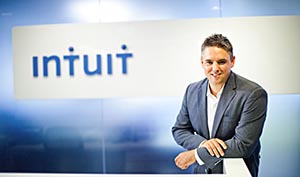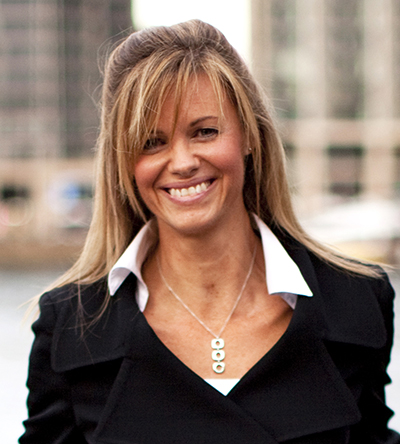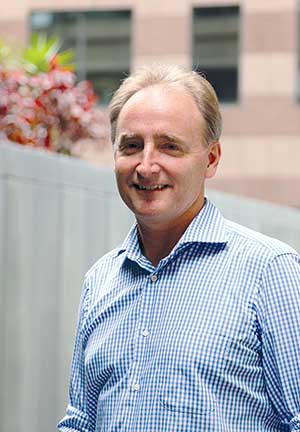 GETTING ORGANISED now for tax time will give small business owners peace of mind and confidence later, recommends Intuit Inc. Asia Pacific vice president and managing director Brad Paterson.
GETTING ORGANISED now for tax time will give small business owners peace of mind and confidence later, recommends Intuit Inc. Asia Pacific vice president and managing director Brad Paterson.
Through advice gathered by Intuit, the maker of QuickBooks Online, Mr Paterson has released eight tips to help business owners cope with the lead up to the June 30 financial year deadline – and create some deduction opportunities.
“Most small to medium-sized organisations have the discipline of quarterly business activity statement compliance,” Mr Paterson said.
“But many businesses still face the significant task of annual reporting. Whatever the reporting regime, the end of the financial year signals a vast array of deduction opportunities as well as potential threats to cash flow.”
Mr Paterson said a great start was to make an early appointment with an accountant.
Christian Schoener, director of accounting, tax and business consulting at the Sydney-based CGSA Group, said getting in early gives you time to review business results before the rush of June 30.
“If you’re using cloud accounting software, your transactions will always be up to date,” Mr Schoener said. “Then you and your accountant can estimate your likely tax position and come up with strategies that make sense for your business, and give you time to implement them.
“The Federal Budget announcement on May 13 could also affect small and medium businesses, so keep an eye out for this and talk to your accountant to help optimise your tax position.”
Mr Paterson said through its market experience, Intuit has developed eight top tips to help remove the stress of the upcoming deadline – but suggested businesses should always consult with a qualified accountant or the Australian Taxation Office for specific questions.
1. Be certain to get super deductions.
Even though superannuation does not have to be paid until July 28, paying employee and personal contributions by June 30 will allow time for processing delays and getting valuable deductions this year.
According to the ATO, superannuation is only deductible when paid. That means that it must be cleared through your bank account, received and recorded by the employee’s superannuation fund prior to that date. Be prepared and pay early.
2. Pay expenses in advance.
If your cash flow allows it, consider paying recurring expenses in advance. Things like insurances, interest, rent, conference fees, subscriptions, travel costs can mean an immediate deduction.
Note that the expense may not be eligible if it covers more than 12 months.
3. Claim deductions now for future expenses.
You may be entitled to claim an immediate deduction for expenses you are committed to, goods or services that have been received or work performed – even if won’t happen before year end. This includes salaries and wages, staff bonuses and directors’ fees.
4. Spend up – but only if you need to.
If you need to replace low-cost equipment or purchase new tools, computers or other equipment soon, consider purchasing them before June 30 to get the full tax benefit now.
Note that you may only receive a $300 benefit for every $1,000 spent. (The company tax rate is 30 percent). Always check the ATO website for the latest updates.
5. Write off bad debts.
To deduct bad debts, the ATO requires you to write it off while it still exists, prior to June 30. Review your accounts receivable with your accountant or bookkeeper to determine whether a deduction qualifies before the deadline.
6. Check your assets and inventory.
Consider writing down or writing off obsolete stock. Then think about revaluing the remaining stock using one of three methods: cost price, market selling value or replacement value. Choose the method that produces the lowest stock value; if the value of closing stock is less than the value of your opening stock, you may receive a deduction. When the reverse occurs, you may generate income.
7. Repay any borrowings.
If you, a family member or an associate have borrowed money from your business, you should ensure that the company charges the appropriate interest and consider making the minimum required repayments before the end of the financial year.
Failure to do so may result in the entire amount of the loan being treated as taxable income, causing you to be taxed personally at rates of up to 46.5 percent.
8. Pay on time; don’t overclaim.
Unpaid taxes and fraudulent claims are serious business. The ATO is actively looking to recover $17.7 billion, with 60 percent of that – some $10.6 billion – owed by small businesses. It’s critical to submit accurate returns and pay on time.
Remember that fines are calculated at a higher rate than a loan and interest on accumulating tax debt is not deductible.
THINK AHEAD TO NEXT YEAR
CGSA’s Mr Shoener said it was not too early to begin thinking about next year.
“If you expect your tax pay will be higher this year than next year, you may benefit from deferring income to next year and accelerating deductions into this year,” he said.
“Using credit cards to pay for tax-deductible expenditures will earn you the deduction this year, even if you don't pay for it until next year.”
Intuit’s Mr Paterson said the growing popularity of cloud-based services simplifies paying taxes for small business owners and accountants alike.
“Entrepreneurs and business owners have enough on their plate without the overhead of having to sort through incomprehensible tax and financial matters,” he said.
“Fortunately, year-end compliance is now much easier with the advent of cloud-based accounting software that’s been designed specifically for small and medium businesses.
“Throughout the year, transactions are seamlessly exported from bank and PayPal accounts, payroll is automatically calculated and integrated, all invoicing elements are captured, and debtors and creditors are a breeze to track.
“All of this means you know where you stand financially – not just at year end but at any time – saving you time when it comes to doing your taxes and giving you the ability spend more time on building your business.”
www.intuit.com
ends




 GETTING ORGANISED now for tax time will give small business owners peace of mind and confidence later, recommends Intuit Inc. Asia Pacific vice president and managing director Brad Paterson.
GETTING ORGANISED now for tax time will give small business owners peace of mind and confidence later, recommends Intuit Inc. Asia Pacific vice president and managing director Brad Paterson. MANY businesses undertaking research and development (R&D) are missing out on helpful 45 percent refundable tax offsets through simple errors in record keeping.
MANY businesses undertaking research and development (R&D) are missing out on helpful 45 percent refundable tax offsets through simple errors in record keeping. 


